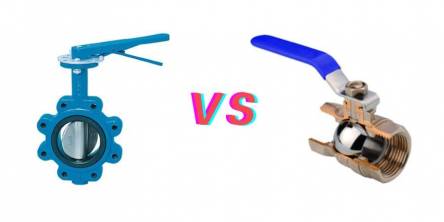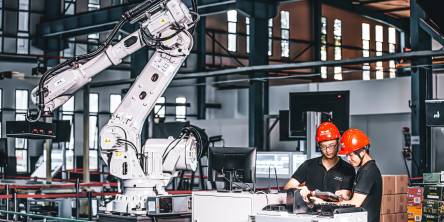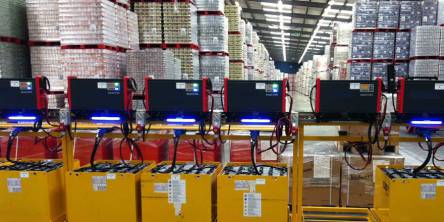Laser Engraver Vs. Laser Cutting
Although the terms "laser engraver" and "laser cutter" are often used in the same context, there are a few differences between them. People have a huge misconception regarding the functions of both terms. In the present world scenario, laser machines can cut as well as engrave single-handedly. The major difference lies in their use. Based on that, it is either called a laser engraver or a laser cutter.
Although you can achieve both tasks, certain lasers come with more features specifically designed for laser cutting or engraving. To have an in-depth understanding, let us begin with their functioning.
Working of the Laser Engraver
A laser engraver has been optimized to exhibit high-quality engraving as compared to other cutting machines specifically designed for cutting. The laser engraver processes a PNG or JPG graphic, picture, or shape. Like an ordinary printer, the laser engraver works by removing the material to form depths horizontally, line-wise, and pointwise. This process is referred to as "grid engraving.
A plethora of designs can be engraved on any surface or shape, such as pictures, inlays, logos, photos, and stamps, ranging from fine to bold lettering. One point to be noted: the surface area can be oxidized when the object's surface is breaking.
Working of the Laser Cutter
Mostly, people confuse this with the laser engraver. However, this is different. Laser cutting works by separating an entire piece in a certain shape out of the material. It is also known as "thermal separation" because the laser heat is used to cut through.
The laser received EPS, CDR, or AL file is sent for design identification. It follows that design and cuts out a piece of material using the laser beam. The machines specifically designed for this purpose run at a much faster pace as compared to ordinary engraving machines.
Carbon dioxide lasers are used for laser cutting as they only engage with the material instead of the pigment inside. During the process, more focus is put on acquiring smooth cuts for well-polished edges.
What is the major difference between the two?
The one and only essential difference between a laser engraver machine and a laser cutting machine lies in its lens. In the case of the laser engraver machine, the lens's focal length is shorter to give a detailed spot while working on any material. This results in high-quality engraved products like photographic images, for instance.
On the other hand, laser cutting machines are equipped with a longer focal length of the lens. This delivers better height variations and manufactures smooth edges. This is applicable for cutting thick materials as the laser cutter will bring down the angle of the sloped edges. The machine works best when applied to materials with a large depth, i.e., 20mm or more.
Here are three factors you should consider while trying to decide which one will work best for you: Using a laser engraver or laser cutter
- Figure out your primary requirement, i.e., cutting or engraving.
- Pay attention to the size of the material
- Identify the kind of materials you want to work on.
Conclusion
Apart from the two varieties mentioned above—laser engraver and laser cutter, there are several other ways of altering the structure of a material, such as laser marking, etching, etc. The introduction of the laser has made things easier than ever. Now, you can expect to engrave or cut on a variety of materials with a professional finish. All you need to do is follow certain steps.
Carbon dioxide can successfully engrave materials of varying thicknesses like MDF, card or paper, acrylic, and many more. When it comes to cutting metals, several technologies are available, such as high-powered CO2 lasers, plasma cutters, waterjet machines, and fiber lasers. Identify your requirements and make your choice wisely.
Similar Articles
When comparing flow control solutions, you may encounter the decision between manual butterfly valves and ball valves. Both types offer distinct advantages and play critical roles in various applications.
Many companies love Lean Manufacturing because it makes things better. It boosts productivity, makes quality top-notch, and saves money while speeding up production. Lean Manufacturing isn't a strict set of rules; think of it as an intelligent way of thinking. It's all about cutting out unnecessary stuff (the "8 wastes") and focusing on what customers want.
Whether you’re a business owner, a supplier, a client, or just an admirer of the oil industry, there’s one thing you have to admit - this industry is among the most interesting ones in the world, and it’s getting more and more interesting every single year
The manufacturing industry, much like a lot of other industries worldwide, has been subjected to a whole lot of changes over the past few years. The cause? Lots of them but primarily the rapid evolution of technology.
The metal industry implies a diverse range of processes, skills and tools to manufacture parts, objects and even large scale structures. With the emergence of modern metalworking tools, a product receives a high level of uniformity and specificity.
In this modern world, all new types of technologies are invented for the benefit of human beings. There are many new things that are used in both commercial and military purposes, and one of the examples is aerospace fasteners. The use of this technology has increased with the invention of the fasteners.
The concept of automating a warehouse has been in place for several years. There is an increased demand for an automated warehouse in recent years due to various reasons. The costs of land and labor have gone up, companies are handling huge deliveries, and consumer expectations are high.
To stay competitive in today’s world, you need to develop technologies that cause less environmental damage. Leading forklift charger manufacturers are then launching a larger number of environmentally-friendly trucks that provide the same efficiency to fulfill their customer’s requirements.
Bend test machines are normally worldwide testing machines particularly arranged to examine bend strength, material ductility, fracture power, and toughness to fracture. Bend tests incline to be related to yielding metal and metals products. Bend test device and test methods are the same as flexure test gear.






6b16.jpg)


